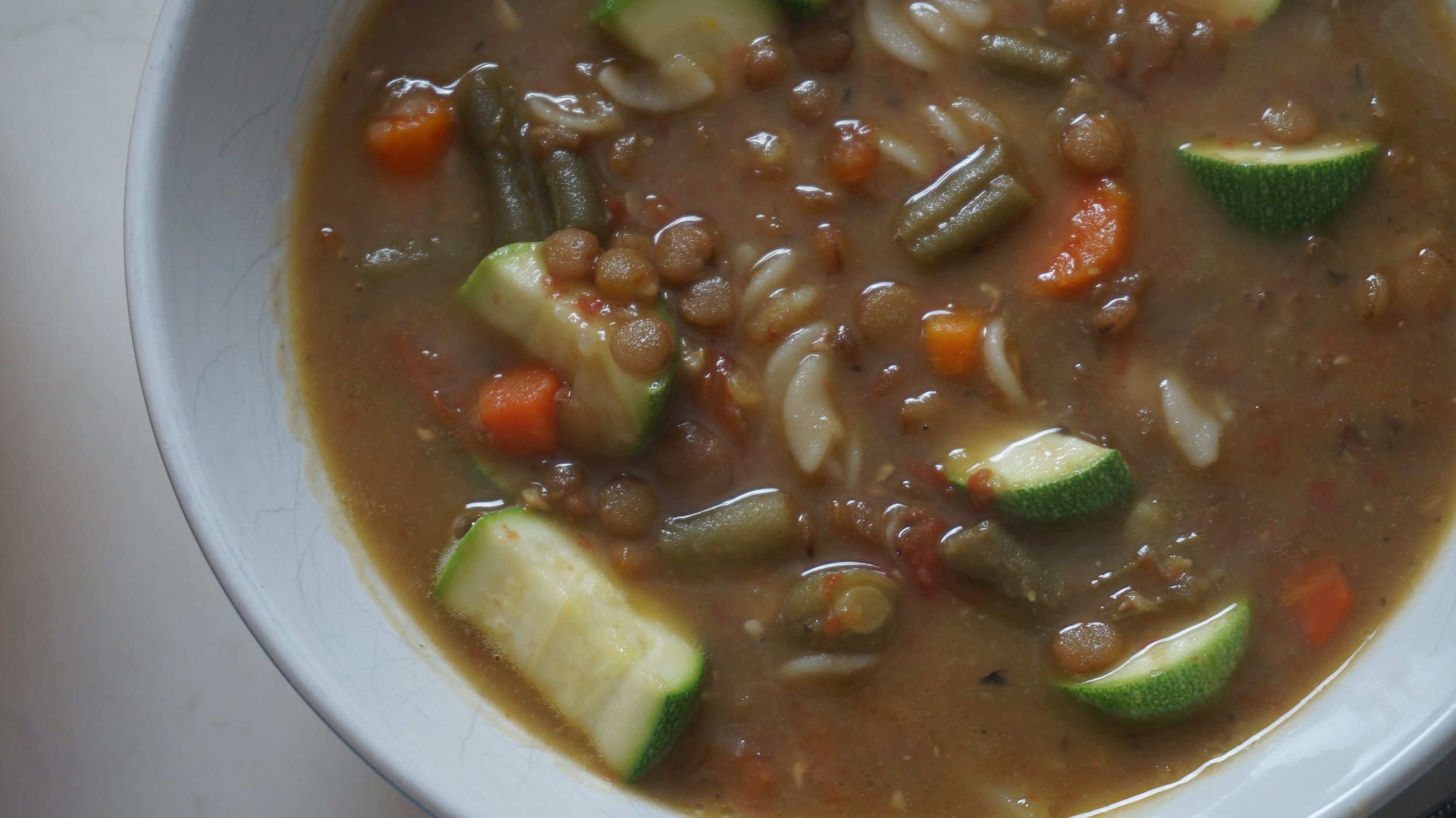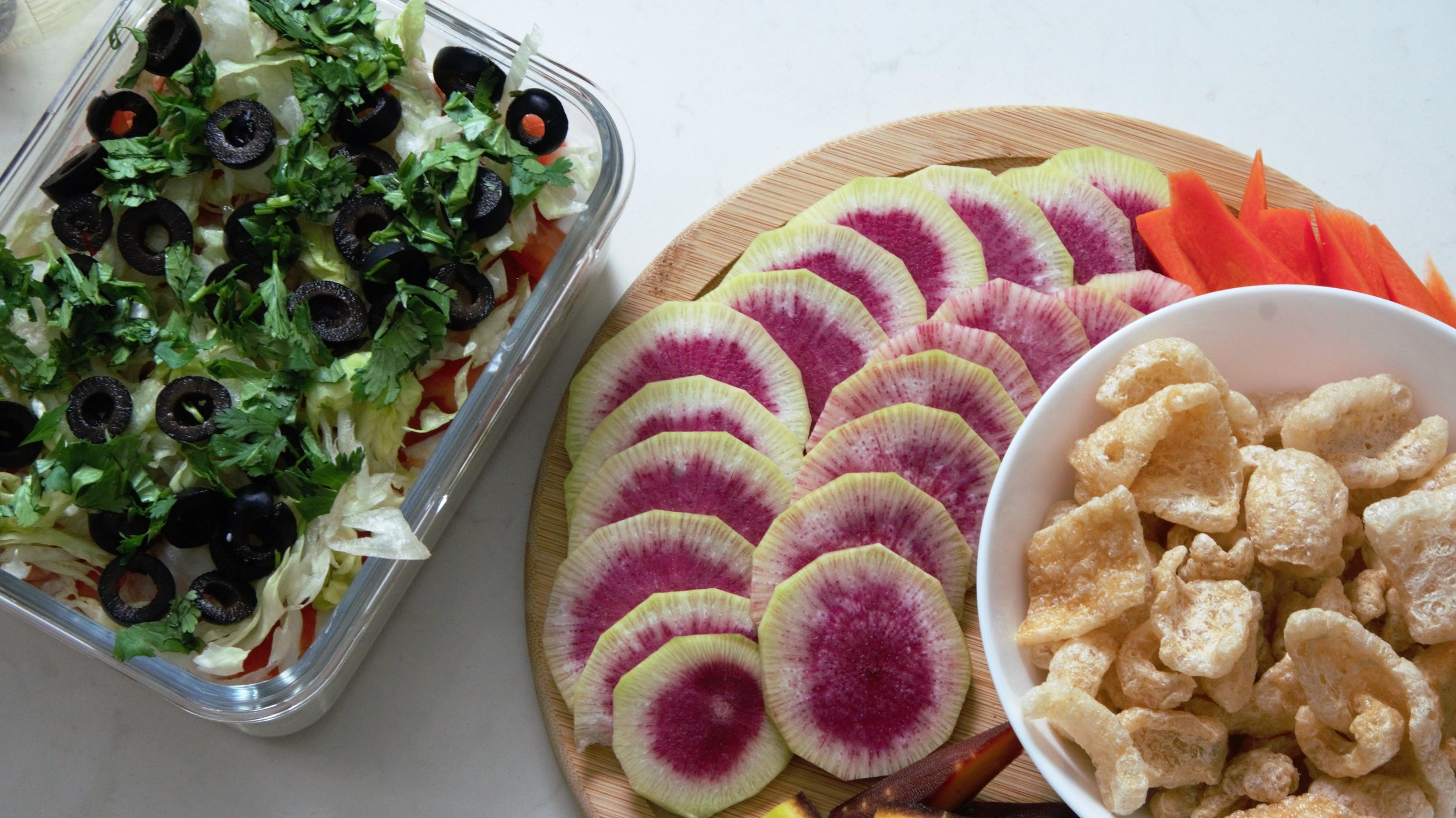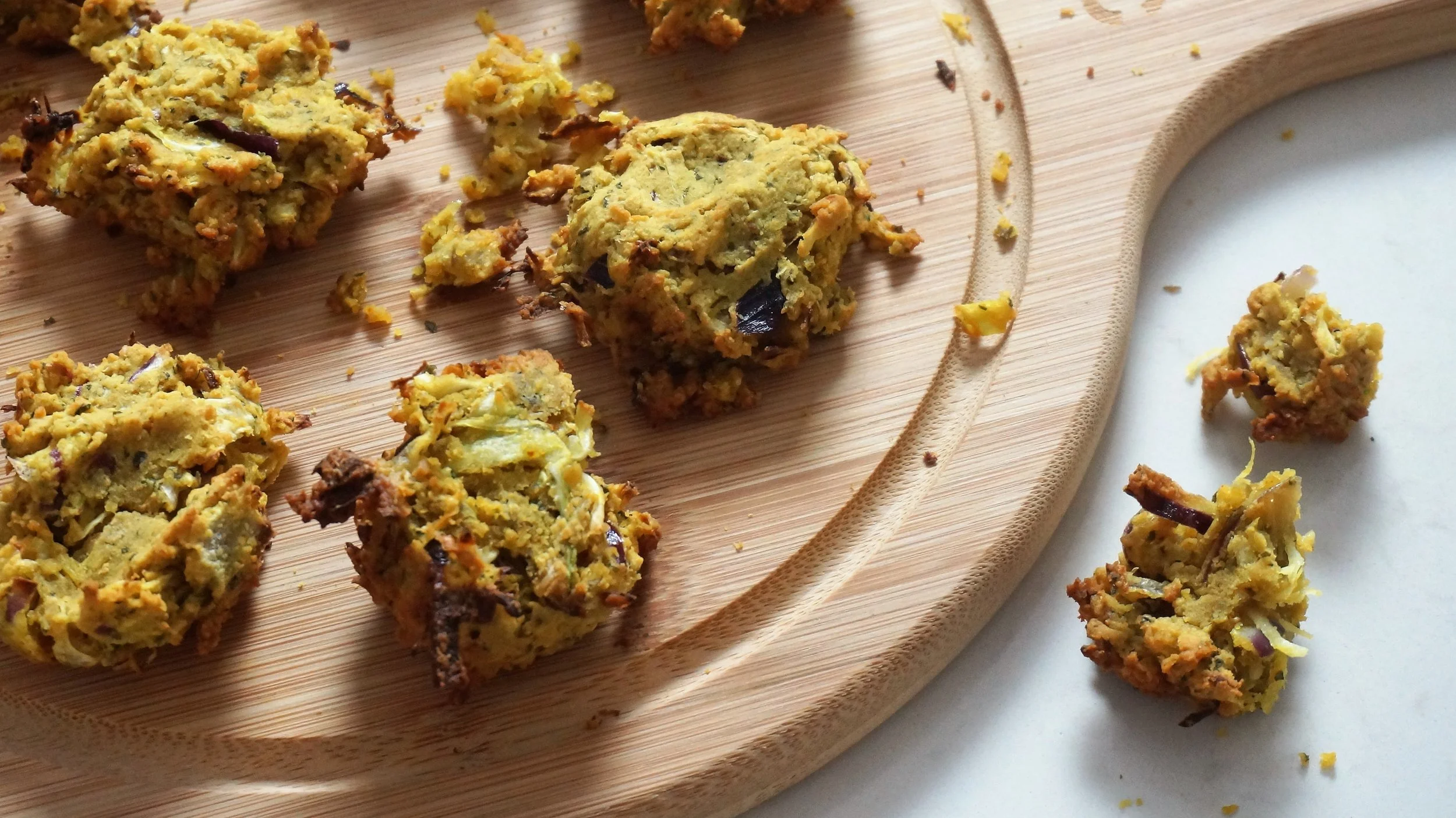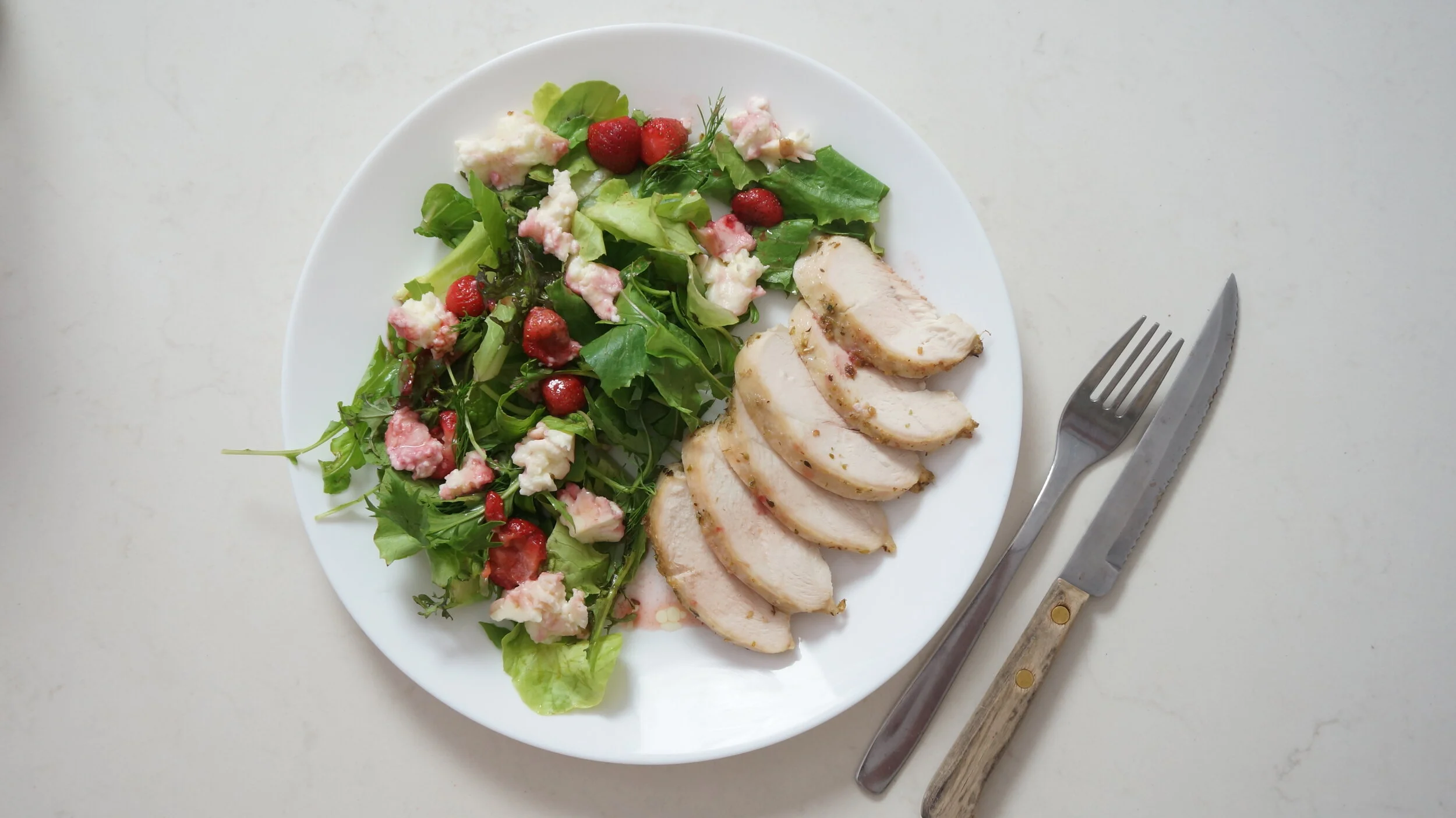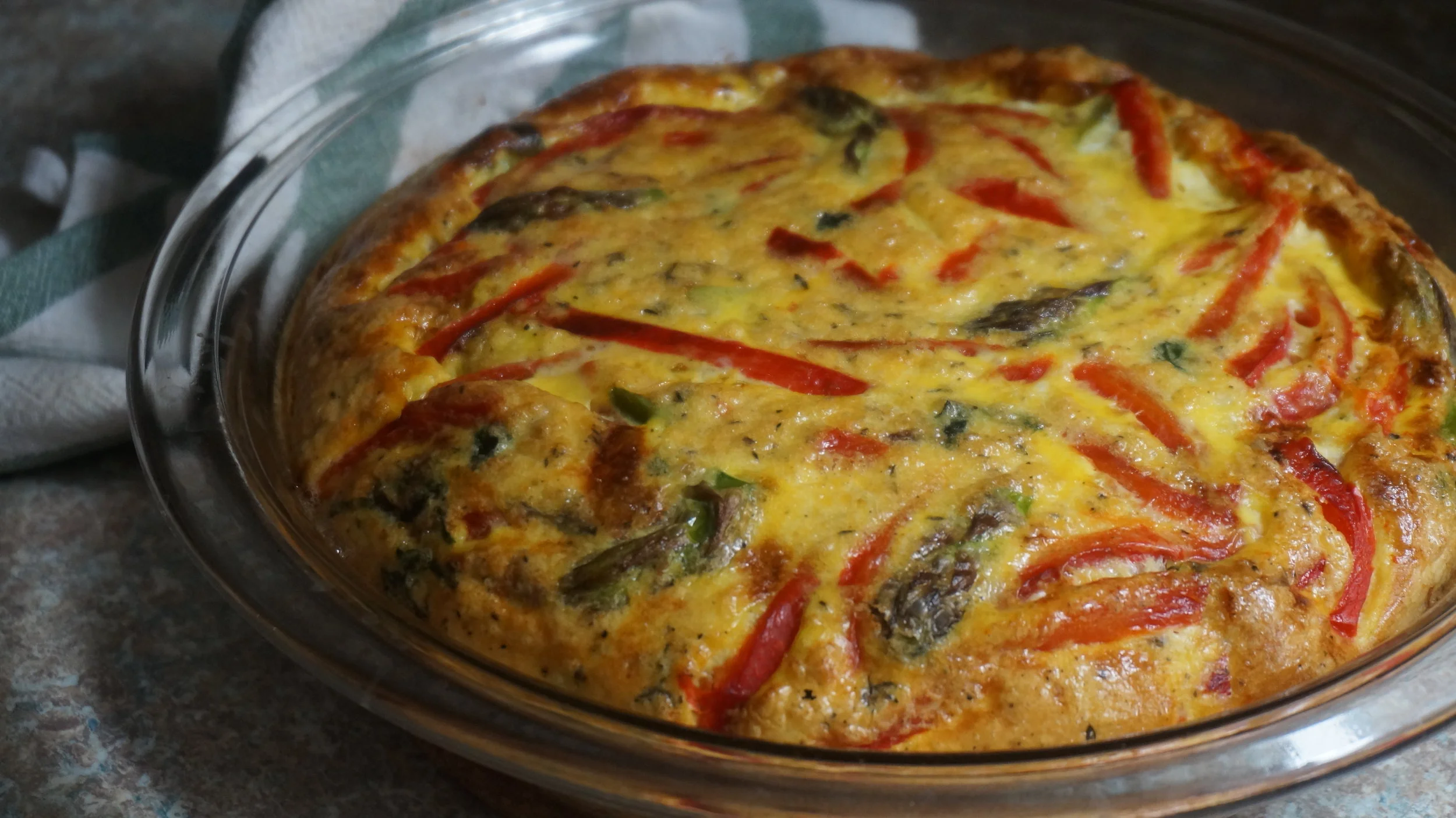It’s been a while since I did a post about general wellness and kitchen tips. Here are my top ways I incorporate more vegetable volume in my diets. I love taking advantage of the full swing of summer produce but don’t want to spend hours in the kitchen or come home to a well intentioned bunch of spinach only to have it go rotten before I get around to it.
Meal prep takes time
Yep, sorry to break it to you. But that’s just how it goes! But here are some time saving tips I’ve had to rely on staying at home with a busy toddler:
Look at meal prep in bite sized pieces. Wouldn’t it be wonderful to have a stress-free 3-4 hour chunk to meal prep. Sure! Sometimes though with a busy child or other obligations we can’t stay focused that long. Try coming home from the grocery store, chopping and washing a head of lettuce right away, having a good quality olive oil and balsamic vinegar on hand (or make your own salad dressing like in the video above) and - bam - you have the makings of a delicious side salad. Storage tip: put the chopped washed and dried lettuce in a large bowl with a lid and make sure you put a paper towel in there to help preserve the lettuce longer. I even store my lettuce inside the salad spinner I use! It works like a charm.
At another point in the day when you have time, marinade some meat or another quick-cook protein (think scallops, shrimp, tofu..) to have it ready to grill or pan-fry. Together you have the makings of a pretty awesome meal for lunch or dinner.
Quick cook grains like rice in a rice cooker has been a game changer for me. Anything that I can set it and forget it (think kitchen appliances automatic timers) help me multitask without worrying that I’m going to set the house on fire. Adding half a can of beans or a chopped vegetable like zucchini, carrots or peas will boost fibre and cook inside your rice cooker with the rice.
Perhaps it’s the hippie in me, but know that it’s ok to slow down. I know it’s unfortunate that we have to acknowledge that we’re not all top chefs with amazing knife skills. Try to find the mindful zen master in you and transforming the menial chopping task into something relaxing. Knowing your why and why you want to eat healthier can help you acknowledge that you may need to invest more time into your cooking and give you have a grounded foundational reason for investing more time in it!
Setting yourself up for success can look like spending 10-20 minutes per week writing down what you want to have for breakfast lunch and dinner every week. It doesn’t have to be a full five course meal for every meal you write down. Even if you think you know what you want to eat, in the busy hangry moments of the morning or evening it can feel impossible to remember. This has also helped me prevent food waste or over spending on groceries because I remember that random sauce or jar of tomatoes I have that I can incorporate into my meals for the week. Other tips include:
Do a once a week or once a month fridge / pantry once over. What can you use up, throw out or downsize. An empty fridge is a happy fridge because you can fill it with delicious freshness and it can help clear your mind and reduce overwhelm and decision fatigue.
Storage containers that are rectangular, or square fit best. Opt for clear ones that you can stack to help you have your pre-washed and/or cooked food ready to use and not get forgotten!
Mix and match! I like to batch cook some steamed broccoli, bok choy, etc. and have it in a bowl or container in the fridge. The veggies could then be added to eggs, or as a side dish with some butter or in a stir fry.
The meal plan can just look like “breakfast - eggs | lunch - salmon | dinner - stir fry” but I know I can add the random cooked vegetables I have in my fridge in a jiffy to any of those more ‘generic’ meal ideas I wrote down for myself for the week. I love the Paprika APP for menu planning for the week! I can even store recipes I find online in the app and organize them.
Let’s add even more vegetables to the mix.
Some of my favourites include riced cauliflower. Tip: adding a tablespoon of psyllium husk to about 1 1/2 cups of cooked cauliflower rice gives it more of that sticky constancy missing from riced vegetables. You can also add it to actual rice 1:1 and boost the volume of veggies you’re eating! This could also be helpful for picky eaters as the white cauliflower rice blends in with rice. Other frozen veggies I love are frozen peas, broccoli and edamame.
Quickly steam veggies using one of those popcorn bowls that you can put in the microwave. Put about 3 cups of veggies with 2 tbsp of water in the bottom. Steam in the microwave for 3-5 minutes, season and you’re done!
Remember those veggie spiralizers? If you don’t have one of those, a grater attachment on a food processor makes prepping cabbage and carrot slaws so quickly! Spiralizers are great for eating raw beets, carrots and zucchini which can all be combined together in one delicious salad.
I love adding 1/3 cup of frozen veggies to my smoothies. Weird right. I was suspicious of it at first but I’ve never noticed the taste of frozen zucchini, broccoli or cauliflower rice to them!
I love mixing up the chips and dips of the world by adding some boring old carrot, celery and cucumber sticks. They may be boring but they go with almost every dip or cheese imaginable. Try washing, cutting and storing a while bunch of carrot and celery sticks submerged in water in the fridge. Changing the water out every 2-3 days keeps them fresh and crunchy! Same goes with radishes, too.
Can your meal be transformed into a salad? Maybe chili or hamburgers on a bed of iceberg lettuce shredded sounds sad to you but don’t knock it till you try it! Or even get those pre washed greens that are ready to go straight from the container. Hey, not extra cooking mashed potatoes or rice as a side, right?
Try my Buffalo Chicken Dip recipe - includes some baked sweet potato in it to give it that creamy consistency and you don’t even notice it. It’s so delicious.
With my toddler I’ve been able to incorporate a lot of extra veggies by adding 1 egg and 1 tbsp flour to almost everything I’ve made for myself like stews, chili, etc. If I combine the concoction together and cook it up in a waffle maker or into small little fritters, he usually tries it.
Try this cheesy waffle:
1 cup shredded cheddar
1 egg, whisked
1 tbsp flour (or all purpose gluten free flour)
1 tbsp chopped broccoli
pinch salt (optional)
butter or oil for greasing
Cook in a hot waffle maker that’s been pre-greased with a little butter or oil until cooked through. It should be brown and crispy. Optionally cook it in a greased skilled in small spoonfuls, flip after 1-2 minutes until cooked through.
But the best tip I can offer for picky eating from childhood nutritional experts is to continue offering a very small portion of something amidst their favourites and by setting an example by eating the food you’re offering yourself. Low pressure environments and frequent exposure to the foods should help. I’ve also found ways to let my child help in the kitchen as daunting as that sounds. I swear, he’s only ever eaten cucumber when I’ve given him a child-friendly ‘knife’ (I use a bench scraper, typically used for baking) and guided him to ‘help me chop’ it.
“But.. I don’t actually like vegetables”
For one, thank you for being honest. And secondly, there’s GOT to be a vegetable you like, no? If not I have the perfect solution for you - a high protein herbed dip with greek yogurt! So healthy, so fresh, so satisfying. I could dunk fresh carrot sticks and lettuce leaves in it all day. I’ve even been known to use this as a side to dip chicken or steak into. Below I’ve put it on these delicious turkey burgers.
Check out my veggie-forward easy recipes here! Happy cooking and, you’ve got to tell me, what’s your favourite vegetable?

